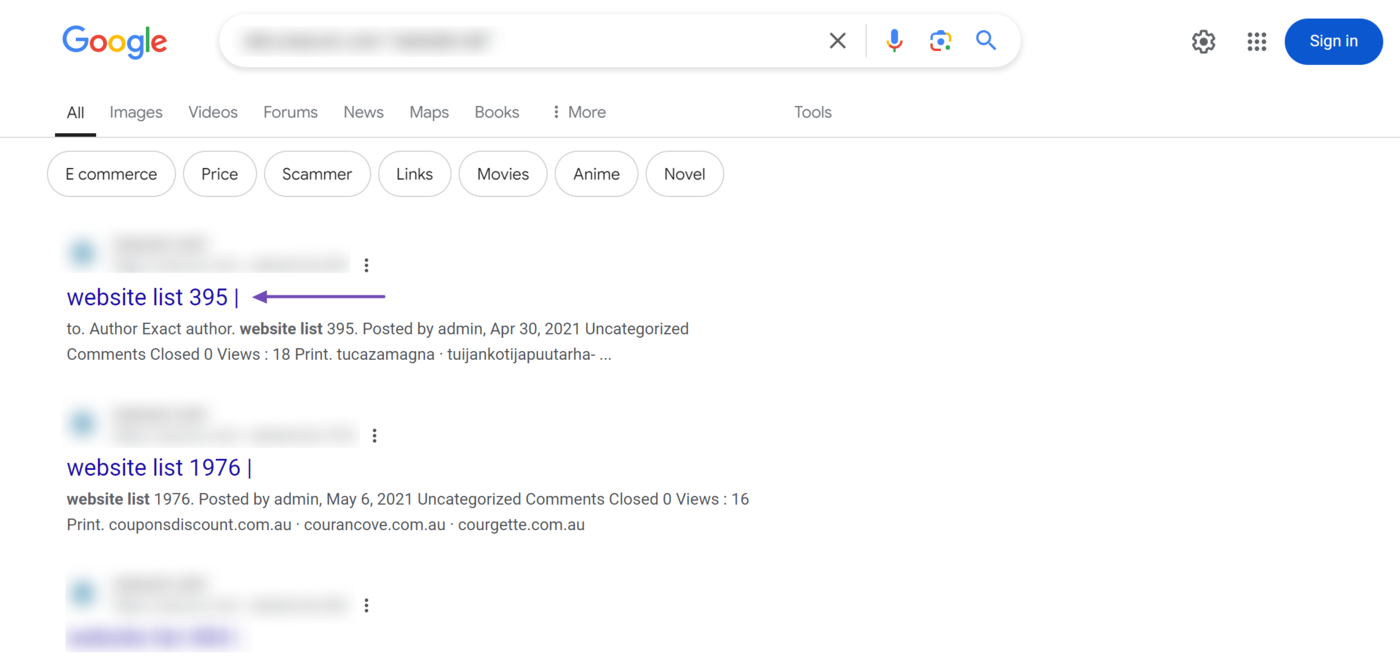What is a Doorway Page?
A doorway page (gateway page, bridge page, or jump page) is a low-quality webpage created to rank for specific keywords on search results pages. It contains little or no helpful content and is only intended to redirect the visitor to a different webpage when clicked.
Doorway pages are a black hat SEO technique. They are usually thin content created by bloggers looking to manipulate search results pages. These bloggers optimize these pages for the keywords their target audience would search for.
Visitors who click on the page on search results are then redirected to a different webpage using a 301 redirect or meta refresh redirect. In most instances, the redirect happens so fast that the visitor does not even know they have been redirected.
Google’s Guidelines on Doorway Pages
Google categorizes doorway pages as webspam. They violate Google Search Essentials guidelines and can cause Google to issue a manual action penalty against the page or site.
Google has automated systems to detect sites that use doorway pages. It may also have its webspam team manually review sites suspected of using them. Google will penalize culpable sites, which could result in the page being demoted or removed from search results pages.
Google mentioned that doorway pages may be implemented on a single site, across multiple sites, or a combination of both. In either case, such pages are created to manipulate Google into thinking they contain relevant and helpful content but then send the visitor to another page.
Types of Doorway Pages
Doorway pages come in multiple forms. Some may not even be obvious to the blogger running the site. So, it is possible to have a doorway page on your site without realizing it. That said, here are some examples of the doorway pages Google has identified.
1 Multiple Similar Sites
Many bloggers create multiple sites with similar domain names. The sites usually rank for the same keywords, and their home pages typically contain the same or almost identical content.
Google identifies these pages as doorway pages as they are created to capture more spaces on the search results page and increase a blogger’s chances of ranking for the target keyword.
For example, these two sites rank for similar keywords on Google search results pages and contain similar content.

2 Location-Specific Pages

This page targets visitors from New York City:

This page is directed at visitors from Philadelphia:

3 Redirect Pages
Some bloggers create pages that rank highly on Google search results pages. However, these pages typically do not contain any relevant or helpful content. Instead, they act as intermediaries and immediately redirect visitors to another page once loaded.
For example, this spammy website ranks highly on Google for a specific keyword.

However, when we click on it, we are redirected to another spammy website unrelated to what we searched for.

4 Multiple Similar Pages
Some bloggers create multiple similar pages on their sites. These pages contain similar content and target closely related keywords. However, they are intended to rank individually on search results pages even though they are usually too similar to be split into separate content.
For example, this site has multiple webpages ranking for the same keyword.

Both pages contain the same content with very slight variations. They were even written and edited by the same people. This is how one of the pages appears:

This is how the other page appears:

Google identifies both as doorway pages and could issue the site a manual actions penalty if uncovered.